JUMP TO TOPIC
Net|Definition & Meaning
Definition
The phrase net is quite a common word and is seen to be used in almost every other sentence. It is also used as a prefix to add quality to a noun. In mathematics and science, the net is sometimes used as a sum or mean of a set of data or as a pattern that can be folded to form a 3d shape. Here we will discuss net income and net of a geometrical shape in detail.
Net Income
Net income or net money is the total amount of money or payment left after all the deductions are assembled. Net money refers to the profit amount excluding all the expenditures from the earnings such as sales of goods, taxes, wages, depreciation, interests, general expenses, operating expenses, etc. Net income makes it easy for investors to have a check and balance on the company’s profitability and manage the income efficiently.
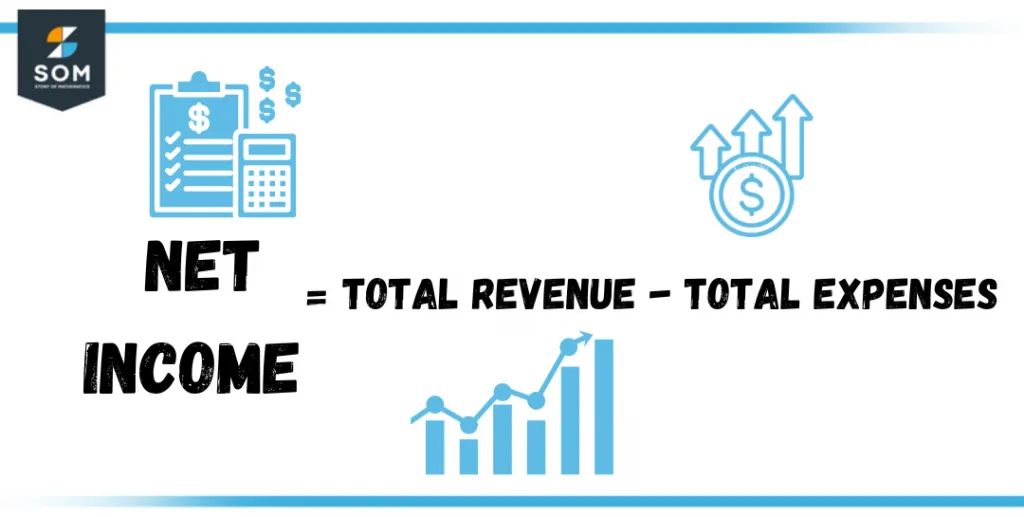
Figure 1 – Net income formula
Particularly, in commerce, net income refers to the amount remaining after removals and lessenings are made. But for an individual, net income is the payment that he earns after deducting taxes, health insurance, allowance, and all the other benefits.
Net Income vs. Gross Income
- Gross income is the total revenue that a company earns without making any deductions and net income is the profit earned excluding all expenses.
- A business’s net income is its total profit in a particular period whereas gross income is equal to the total sales made at the same time.
- Gross income allows owners and managers to track their sales and services growth whereas net income helps measure a company’s profit margin.
- Net income is important for owners as it provides acknowledgment about how to get a considerable sum of earnings and profits. but Gross income is important to track the company’s sales magnitude.
- Net income is more inclusive than gross income.
What Are the Benefits of Net Income?
- It provides an overview of the company’s performance over the years.
- It helps to manage the company’s profitability ratio.
- It is a good indicator of knowing how prosperous a business is.
- It provides financial data needed by investors.
- It provides a good insight into whether a company will remain successful.
- Net income shows the solid earnings of the company after all the expenses.
How To Calculate Net Income
- First calculate gross income by finding revenue, COGs, and expenses. Revenue represents the total sales of a company in a period and COGs stands for cost of goods .it includes direct material costs, wages, repairing expenditures, shipping outlay, production facilities, and many more.
- Now calculate operating expenses and subtract them from gross income. This gives us operating income.
Operating expenses include rent, utilities, wages, taxes, maintenance, repairs, depreciation, and property taxes.
- Deduct non-operating expenses the expenses inapplicable to the company’s direct activities and operations.
- Add any non-operating income. This is the gain derived from sources other than from products or services. for example, dividends paid to the company.
- Subtract taxes.
- The result is the net income.
Let us consider an example of the net income of a candy company. This small business had sales of \$18,750,000 during the quarter. The cost of manufacturing the candy was \$9,875,000, leaving a gross income of \$8,875,000. The company’s operating expenses came to \$3,125,000, resulting in an operating income of \$5,750,000. The owners subtracted \$375,000 in interest expenses and added \$425,000 in interest income, yielding a net income before taxes of \$5,800,000. All the taxes of \$1,875,000 were subtracted, and the company was left with a net income of \$3,925,000.
Sales or revenue = \$18,750,000
Cost of goods sold = \$9,875,000
Gross income = \$8,875,000
Operating expenses = \$3,125,000
Operating income = \$5,750,000
non-operating expenses = \$375,000
Gross income minus expenses = \$425,000
non-operating income = \$5,800,000
Net income before taxes = \$1,875,000
taxes = \$1,875,000
net income = \$3,925,000
Other Names of Net Income
Other names for net income are as follows
- Net profit
- Net income after taxes
- Net earnings
- Bottom line
- Net pay
- Take-home income
- Net wages
- Taxable income
Net in Geometry
Net in geometry(also known as geometric net) is defined as a 2-dimensional pattern of any geometric figure that can be molded into a 3-dimensional solid figure. Net shows us what a 3-dimensional geometric figure will look like if its ends are flattened and laid out and all the faces are visible. 3-dimensional figures can be made by folding nets.
Net of a Cube
A cube is a 3-dimensional figure having 6 square faces, 8 vertices, and 12 edges. Each square face has the same side length and same size.
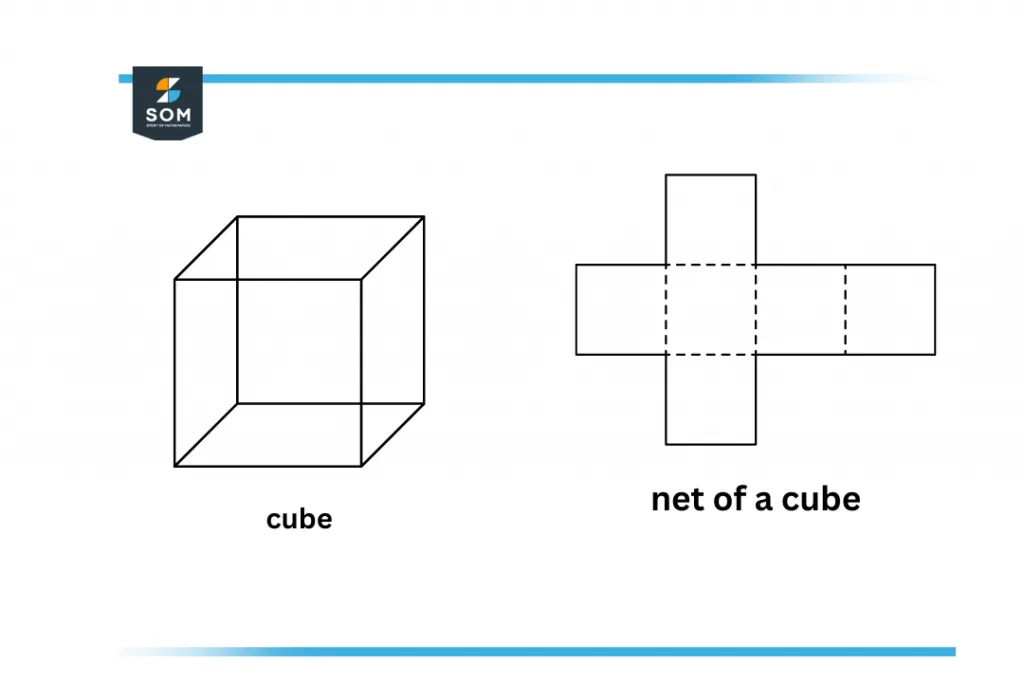
Figure 2 – Net of a cube
Surface area of cube= 6a2
Net of Cuboid
A cuboid is a 3-dimensional shape having 6 rectangular faces,8 vertices, and 12 edges. the only difference between a cuboid and a cube is that a cube has square faces whereas all the faces of a cuboid are rectangular.
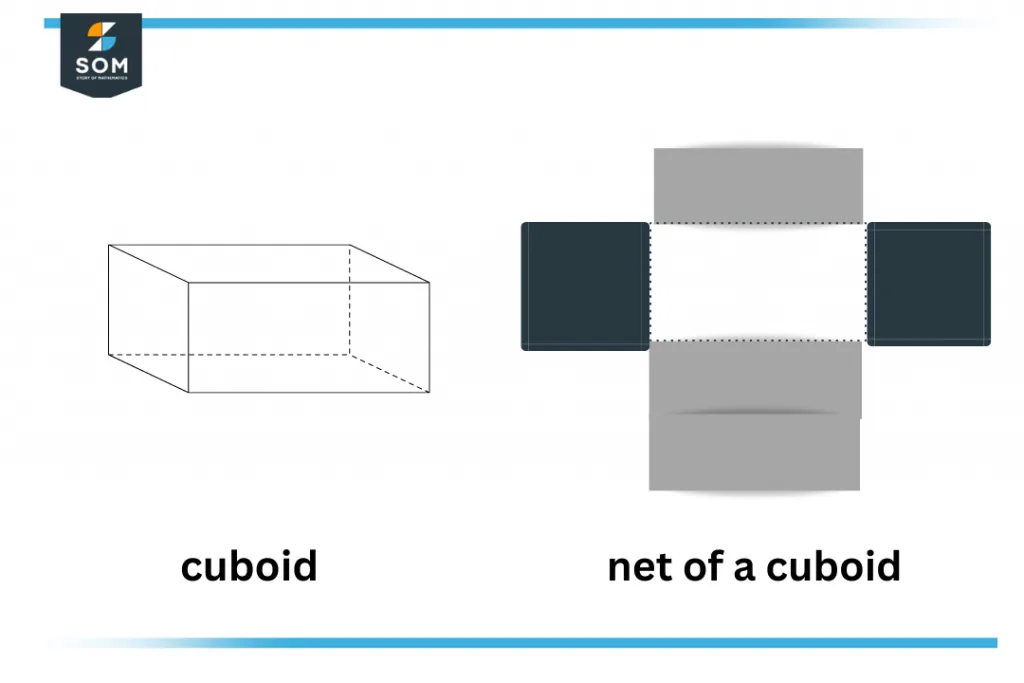
Figure 3 – Net of a Cuboid
Surface area of cuboid = 2(length * width) + 2(length * height) + 2(height * width)
Net of a Square-based Pyramid
A pyramid is a 3-dimensional shape having a base and triangular-shaped sides that meet at the top. The point where the sides meet is called the apex. The base of the pyramid is a polygon. The triangular faces are called lateral faces.
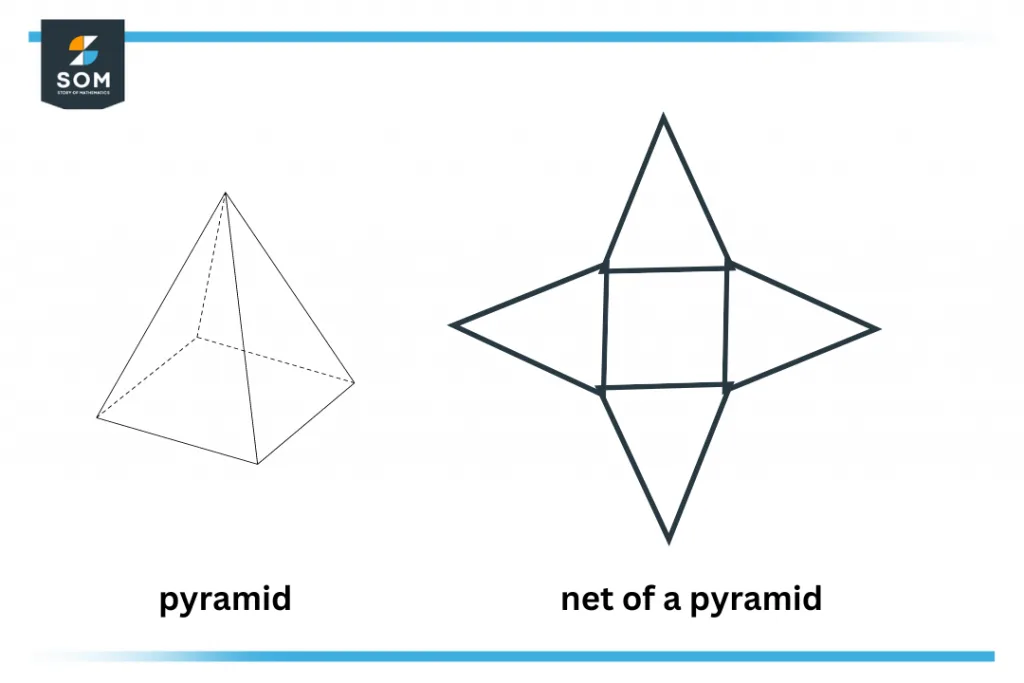
Figure 4 – Net of a Pyramid
Surface area of the pyramid = base area + lateral area
Net of a cone
A cone is a 3-dimensional geometric figure having a circular base and curved surface pointed towards the top called the apex. A cone has 2 faces, a vertex, and an edge.
Surface area of cone = $\mathsf{\pi r(r+\sqrt{r^2+h^2})}$
Net of a Cylinder
A cylinder is a 3-dimensional geometric shape having two circular parallel bases connected by a curved surface. The distance between two circular bases is called the height of the cylinder. A cylinder has 2 flat faces, 1 round face, a total of 2 edges, and contains no vertices.
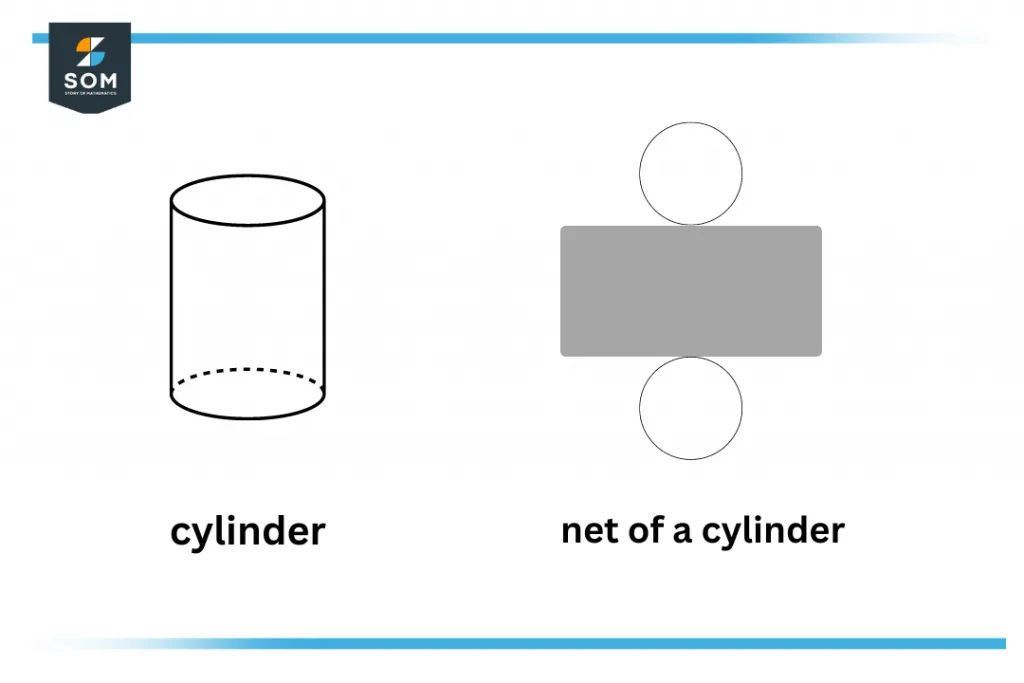
Figure 5 – Net of a Cylinder
Surface area of cylinder = 2πr(h+r)
Solved Examples
Example 1
For the given pyramid, what would be its surface Area?
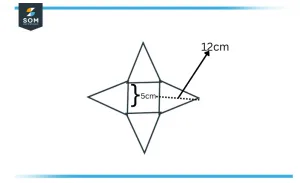
Figure 6 – Example of Net of a Pyramid
Solution
From the figure:
Height = 12cm
Length = 5 cm
To find the area of the pyramid, first, we need to find the area of a square and the area of a triangle.
Area of square = a2
= 52
= 25 cm2
Area of triangle = 0.5 * (length * height)
= 0.5(12 * 5)
= 30 cm2
Surface area of pyramid = area of square + 4(area of a triangle)
= 25 + 4(30)
= 145 cm2
Hence, the square-based pyramid has a surface area of 145 cm2.
Example 2
For the given cylinder, what would be its surface area?
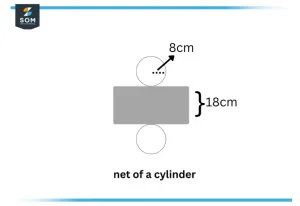
Figure 7 – Example of Net of a Cylinder
Solution
Surface area of the cylinder = area of the circle + area of the rectangle
The area of the circle is $\pi$ r2, but as we have 2 circles, we multiply it by 2:
Area of circles = 2$\pi$r2
= 2$\pi$(82)
= 2$\pi$(64)
= 128$\pi$ cm2
Now, let us find the circumference of a circle to use it as the length of the rectangle:
Circumference = 2$\pi$r
= 2$\pi$ * 8
= 16$\pi$ cm2
Area of rectangle = length * width
= 16$\pi$ * 18
= 288$\pi$ cm2
Since:
Surface area of the cylinder = area of the circle + area of the rectangle
= 416$\pi$ cm2
Hence, the surface area of the cylinder is 416$\pi$ cm2.
All images/mathematical drawings were created with GeoGebra.
